An olive harvest: Olive oil qualities

3. Sunday
Today’s pickers are the same as last Sunday, the youngest is five years old, the oldest seventy or over. We all know what we have to do and I, still considered a complete newcomer, try to be satisfied with the only occupation which seems suitable for me, generally known as the worst. At least this is what my companions tell me when we reach the end of the crop.
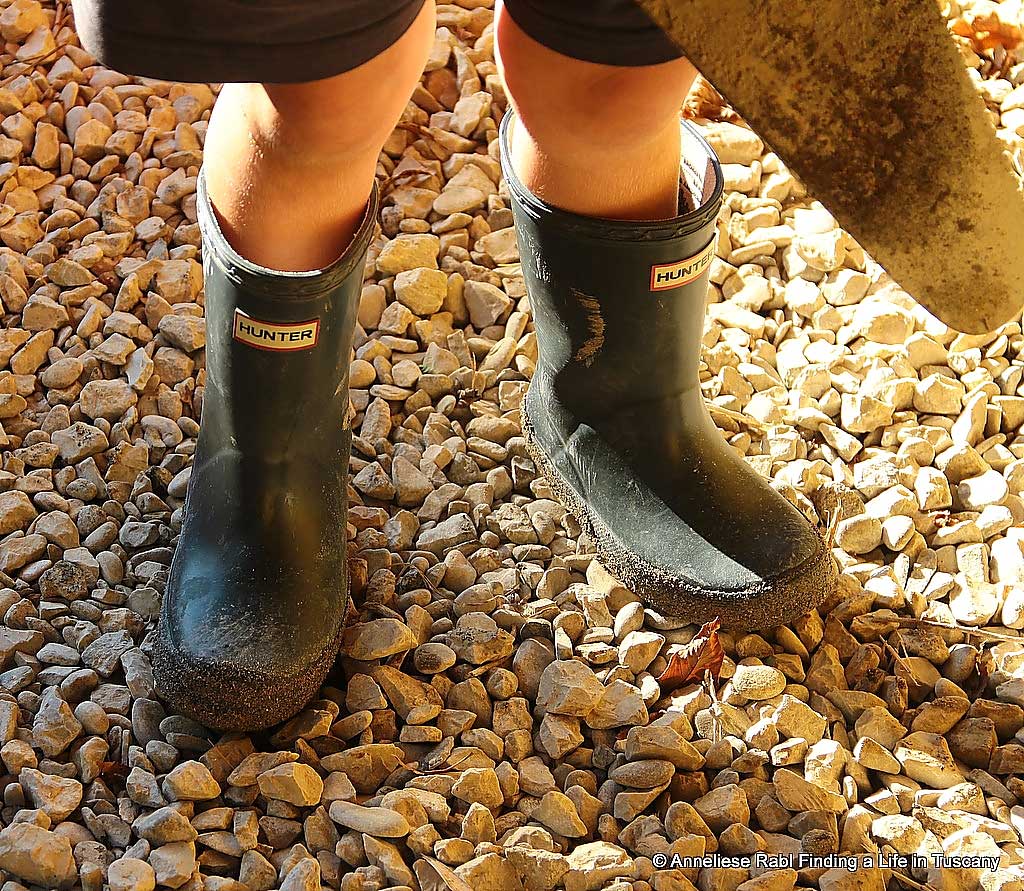
From the very beginning I did not fail to notice that the whole crop is divided into men’s and women’s jobs. In no case would a man kneel down to gather the olives. Never would a woman climb a ladder to pick them from the tree and let them fall into the nets. My rebellious nature stirs up immediately. For all my life, I have fought for the same rights, for women’s dignity, for equal professional prospects. Last but not least the right to decide over my body. I certainly cannot accept this disparagement.
Some challenging remarks from my side are deliberately overheard by the men. Their superiority, at least as far as the work in the olive grove is concerned, is not under discussion. However it seems to me that not even the women are interested in following the subject. The differences are undeniable but then, again, everybody respects each other’s operating range. Without true collaboration, in fact, the harvest would be seriously compromised. Ok. However, I cannot deny that slowly, inside me, a firm decision is ripening. Sooner or later I shall climb a ladder and pick the olives from the very top of a tree.
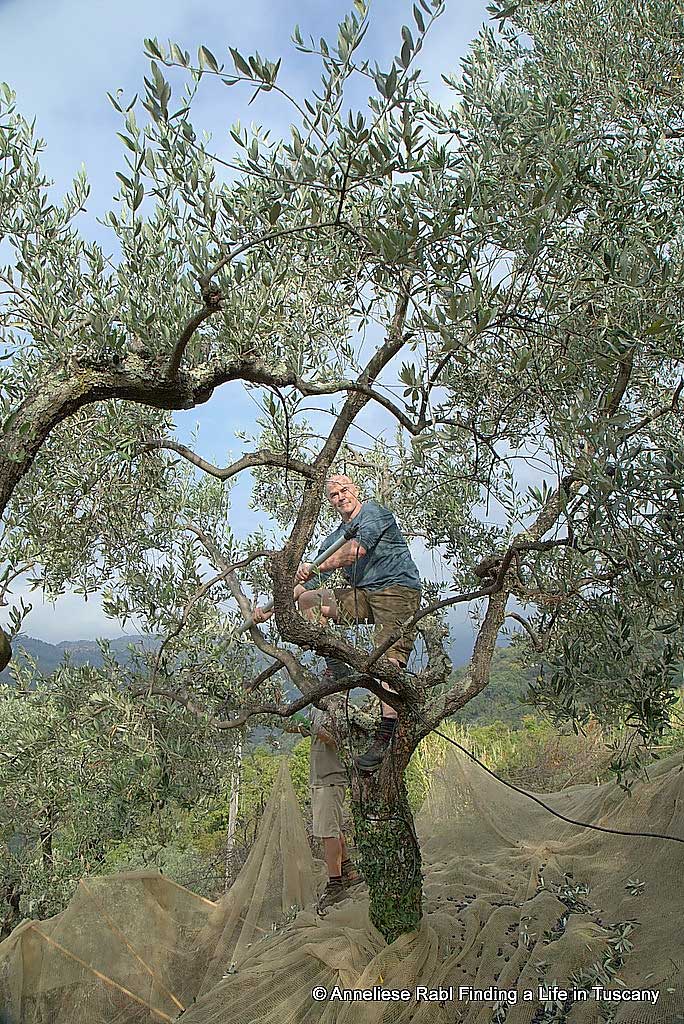
For the moment, let me return to my occupation…
Picking the fallen olives from the ground is obviously an easy task, but still needs a certain technique and attention. The olives must not be gathered without making any distinction. On the contrary! Last year’s olives are “untouchable”, the worm-eaten, muddy or those swollen with humidity, too. Green light for the olives which have fallen recently and which, on touching, still feel hard. For centuries leaving them to rot on the ground, as so often happens today, was an inexcusable waste. Many self-employed, among them the owner of the campo, is of the same opinion.

Even Cato (234-149 B.C.), the famous Latin writer, author of De Agricoltura and himself a landowner, recommended not to leave a single drupe on the ground. His parsimony was legendary and bordered on stinginess. As far as he was concerned, the worst could still have been transformed into food for the slaves. For this purpose the olives were dried in a hot oven, an operation which would also have killed any possible grubs. Then, they were mixed with oil and salt and transferred to an earthenware jug. At this point, they needed to be completely covered with the muddy sediments of olive oil. These olives, dressed with plenty of garlic and a few peppercorns, were an exquisite and tasty accompaniment. Especially, of course, for those who were very hungry and could not argue about the quality of the food they had been served.
There is, of course, not only my way of picking the olives. When “harvesting by hand”, for example, the branches are reached by ladders. The olives stripped off the branches would fall into baskets or onto nets placed under the tree. In this way the olives are damaged as little as possible. This is considered the best but also the most expensive way. Then there is the “combing” technique. With a wooden rake the olives are combed from branches and boughs directly into the nets under the trees. This method, too, does not damage the drupes. However, together with the good ones also the bad and a large quantity of leaves finish in the nets.
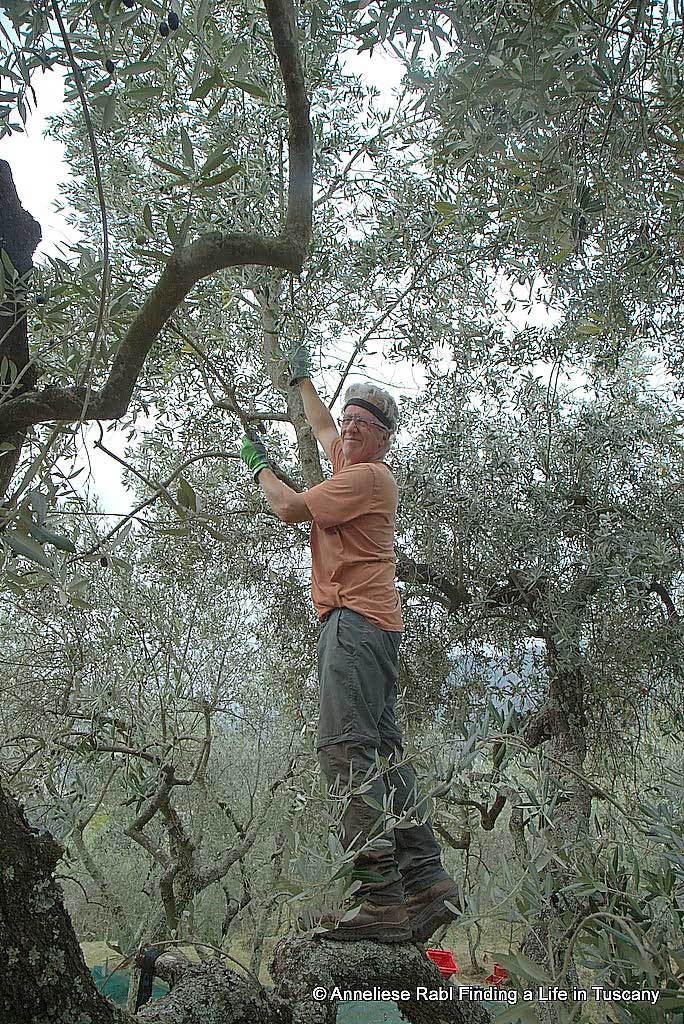
Another system of harvesting is “shaking”. The twigs are shaken by hand and the olives fall into the nets placed under the trees. In this way, usually only the completely ripe olives fall. The others remain on the trees making a second crop necessary. “Swatting” means that the drupes are harvested by swatting the branches and boughs with long poles making the olives fall onto the gathering nets. The poles, however, may damage the foliage, the branches and, of course, the olives.
Last but not least there is the “mechanical” harvesting with machines shaking the whole tree, or the branches and twigs and a suction apparatus “picks” them up. This system considerably reduces the cost of harvesting. Due to the size of the machinery, this technique, however, can only be applied on flat land. As ninety percent of the Tuscan olive groves are on fairly steep slopes this method, alas, can not be used.
At the end of the day I can no longer feel my back. My knees hurt, I am freezing cold. Despite all these hard conditions, however, I am satisfied with what we did today. Right in front of me several boxes are piled up. They contain about two hundred kilos of carefully harvested olives with a small, but well proportioned quantity of leaves. I can even touch them. Unbelievable!
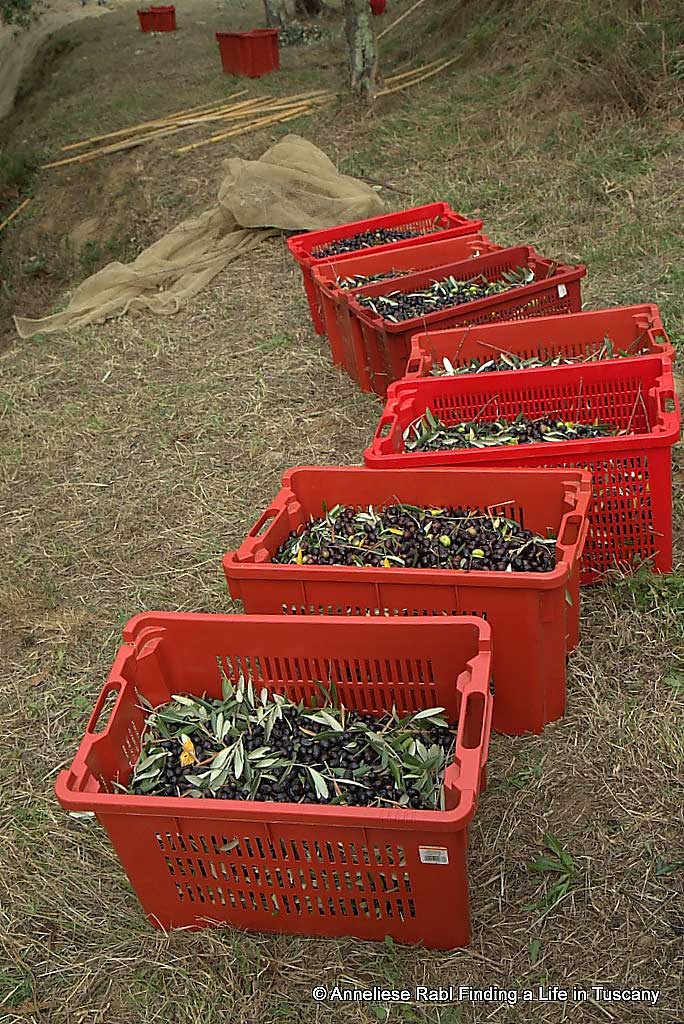
This week, when I do the shopping I will have a closer look at the endless shelves of olive oil. If I am not mistaken the best known olive oils are divided in “extra virgin olive oil”, “olive oil” and “olive pomace oil”. I start to have doubts. Could it be that I have simplified the whole question too much? By now, I am totally involved and, once home, I decide to ask my neighbour, an authentic expert in this field, to give me a smattering of the matter.
“Well, dear, as per today’s laws, the olive oils offered in grocer’s shops and supermarkets are subdivided as follows, naturally taking into consideration the production process and the specific chemical characteristics and above all the contents of free fatty acid per each hundred grams of oil:
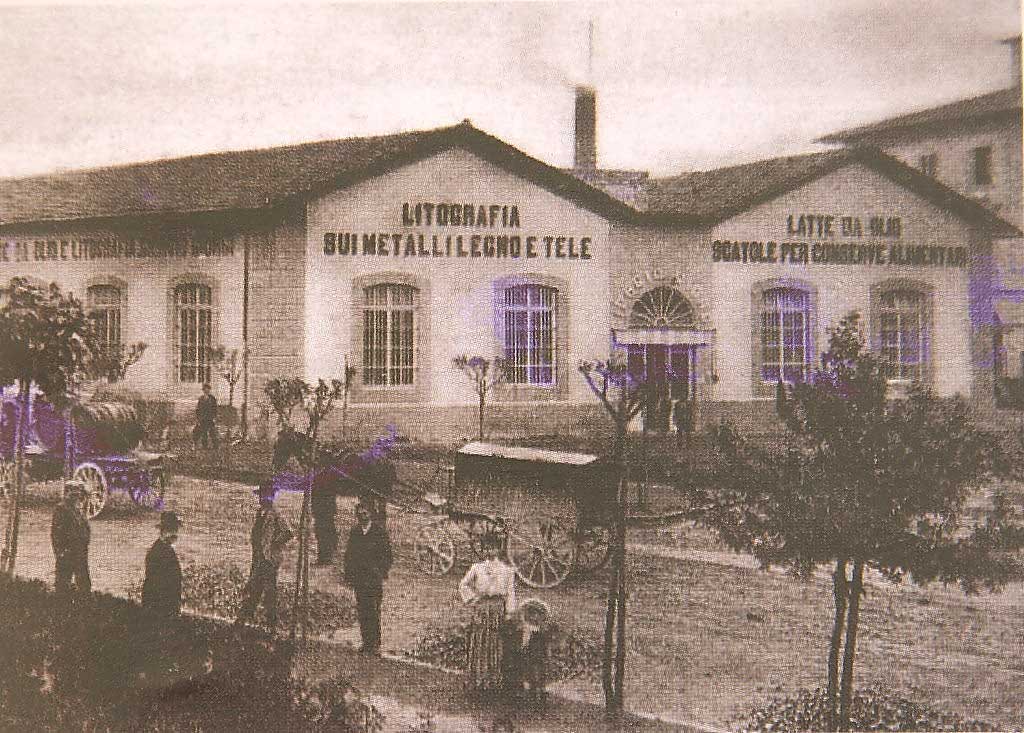
Extra Virgin Olive Oil
The Italian olio extravergine di oliva is the best oil in quality. It is obtained by simply pressing the olives. It must not contain more than one percent fatty acid. The lower the content of fatty acid the better the oil.
Olive Oil
The Italian olio di oliva is gained by blending refined olive oil with plain virgin olive oil. It must not exceed 1,5 percent fatty acid. Plain olive oil is obtained through refining and blending procedures. Therefore, according to the Italian law, it is not to be considered an agricultural but an industrial product. For this reason it is strictly forbidden to sell it in bottles with an olive portrayed on the label.
Olive Pomace Oil
The Italian olio di sansa di oliva derives from blending refined olive pomace oil and virgin oils. Like olive oil, it must not contain more than 1,5 percent fatty acid”.
“Isn’t it easy to lose oneself in this jungle of pomace, virgin, extra virgin, refined oils, fatty acids and all the rest ?”
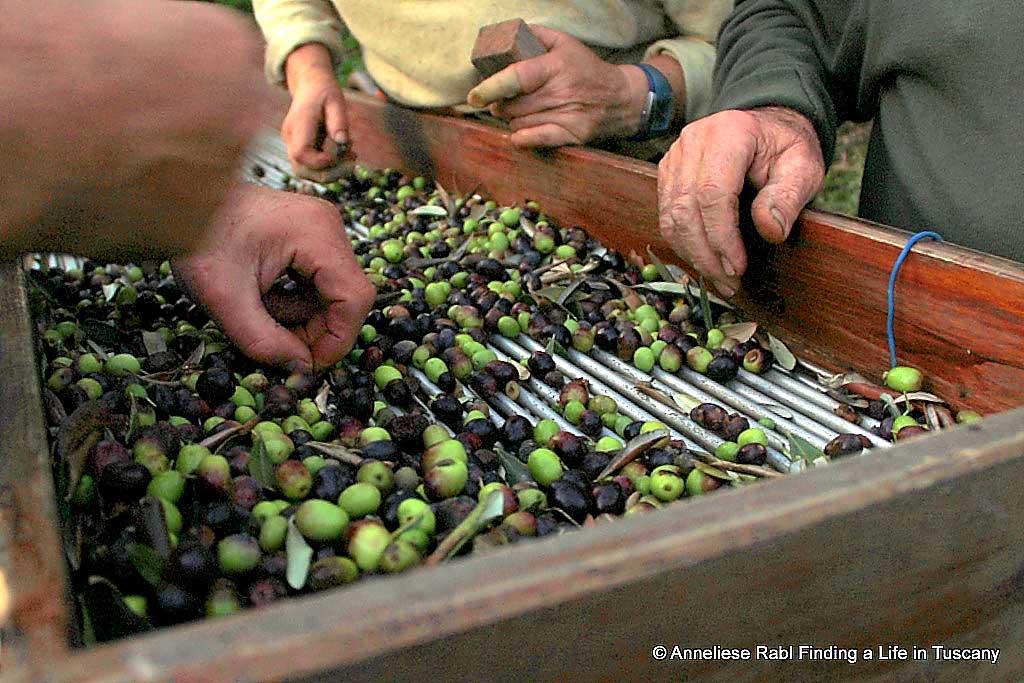
“It is, indeed. The only way out is to trust the producer’s honesty. You also want to study carefully the label on the bottles. There, you can see information about the quality of the oil and its producer. The more complete the label is, the better chance that the manufacturer is reliable. Did I fully answer your questions?” He smiles and I smile back.
“Not really. May I also ask you what sort of information the label must contain?”
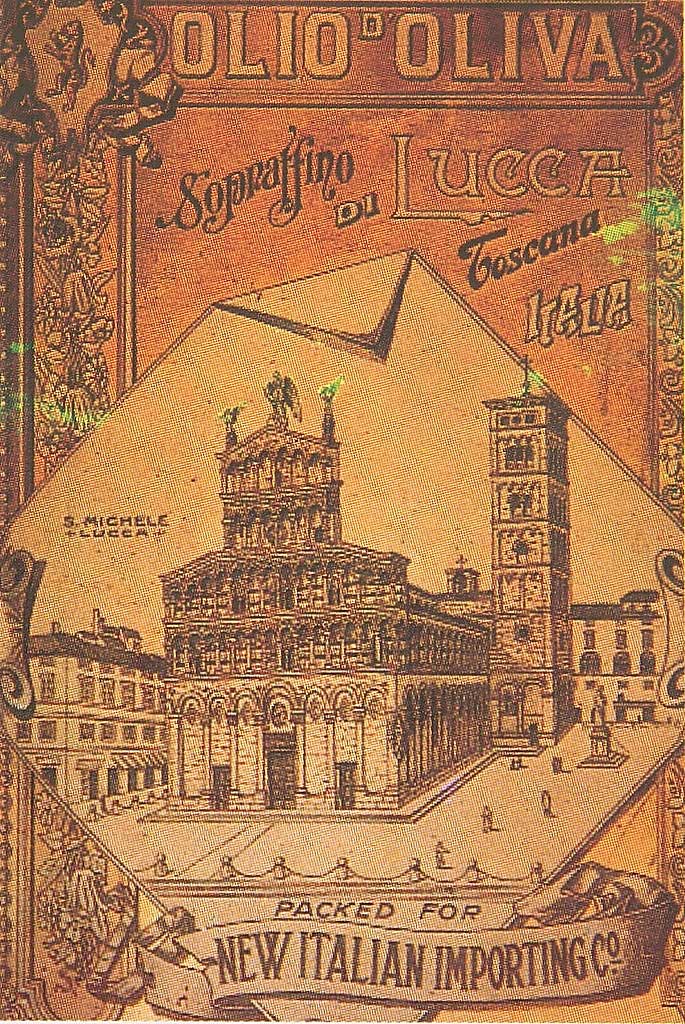
“Well, first of all information about what type of oil is in the bottle, (extra virgin olive oil, olive oil, pomace olive oil). Then the exact amount, the production and expiry date and the producer’s name and address. Look for quality marks like “Extra Virgin”, or “organic cultivation”. They certify a high quality standard of the oil produced by respecting the following points:
- begin harvesting when the olives start to change colour and become pink-violet
- make sure that the olives remain on the catching nets, which must touch the ground as little as possible
- keep them in sufficiently ventilated containers in which the quantity of the olives must not exceed ten centimetres
- make sure that the olives are processed as quickly as possible, in any case within less than eight hours from harvesting
- see that the water in which the olives are washed before being pressed is constantly changed
- check that the working equipment has been carefully cleaned
- ensure that the olive mass is not being overheated during processing
- make sure that the oil is decanted several times to remove any eventual residues
- store the oil in a dark cool place”.
“And what does “extra virgin olive oil from organic cultivation” mean?”
In the case of olive oil from “organic cultivation”, the olive grower, oil mill, bottler and trader, in short all the people involved must be associated with a control system of an inspection body or a state authority. The whole production process as well as the transport of the olives and later the finished oil must be reported. On a special register anyone can consult at anytime. Only if the final user can personally verify how much work is required for the production of the oil can he understand its real value.
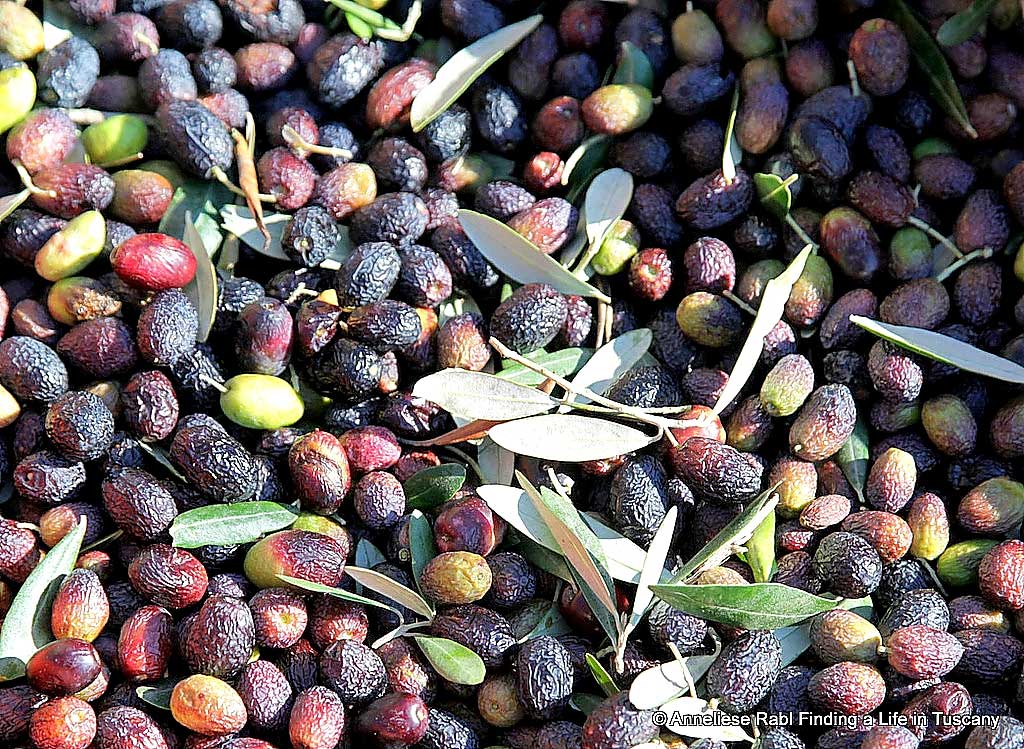
The main target of organic cultivation is a healthy, high-quality olive oil, without use of pesticides or artificial fertilizer residues. The pesticide control allows only products and techniques which do not have any negative influence on the environment. The cultivation method must be non-polluting and energy saving, giving in any case preference to renewable energy resources. The oil itself is subject to rigid, legally fixed controls, which verify the observance of the production rules. Oil from organic production carries the EU-logos as per Council Regulation and can be identified as such.
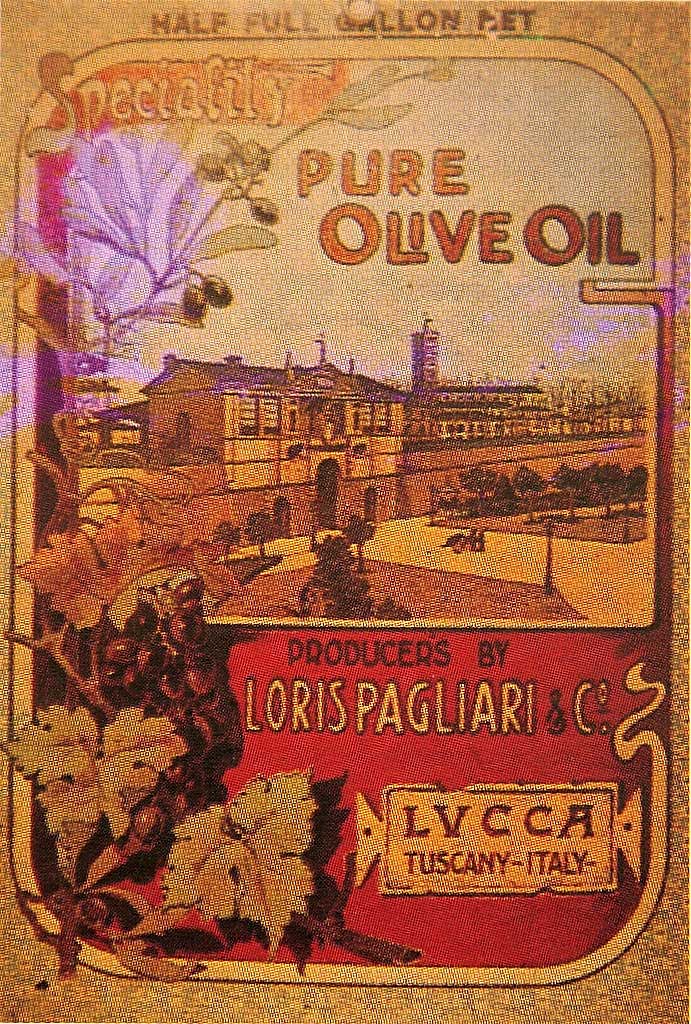
If the owner of the campo where you are harvesting, would like to change his olive grove into organic cultivable land he would take on a great responsibility. Not only would he have to examine the production capacity of his olive grove, the suitability of the soil for organic cultivation, the adaptability of the soil to climatic conditions, Also the working techniques to maintain the quality of the soil or to improve it. He would have to be prepared to judge the use of natural fertilizers well enough to maintain the chemical/physical properties of the soil, to estimate when and if to use pesticide and ask for the necessary permission in time. It is understood that he would also have to harvest the olives following the strict, above-mentioned rules, respected by all serious olive oil producers”.
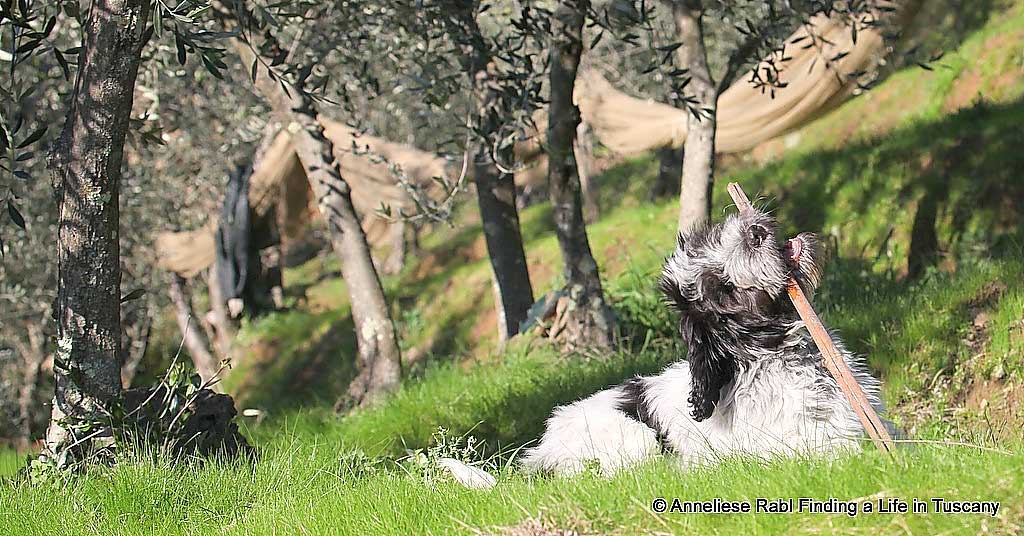
“Thank you so much for sharing your knowledge with me!”
“You are welcome!”
Finally I understand that the question is not: “Why does high quality olive oil cost so much?” but “why does it cost so little?”
It makes no sense but although I now know that the olives from the campo are not being harvested respecting the severe norms, I am nonetheless convinced that there will never be another oil fit to hold the candle to it!
Photo credit cover photo: F.A. Cecchi, affresco Il Mito di Minerva, Villa di Forci, Pieve Santo Stefano, Lucca. Camera di Commercio, Lucca. Nel paesaggio del vino e dell’olio.

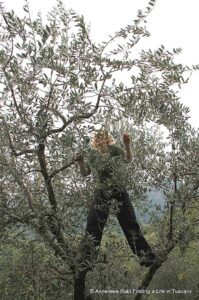
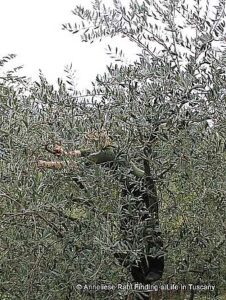
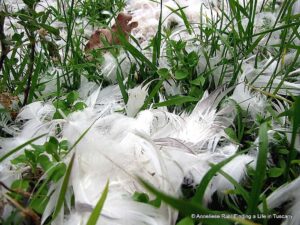
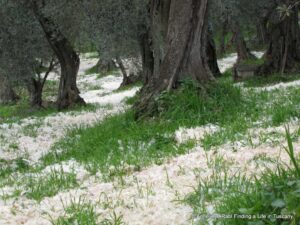
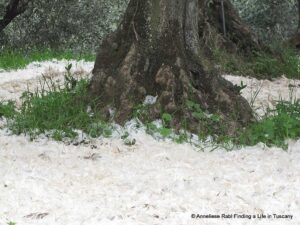
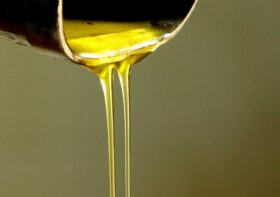
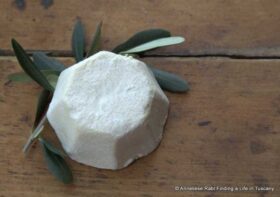
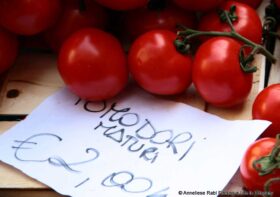
Leave a Reply